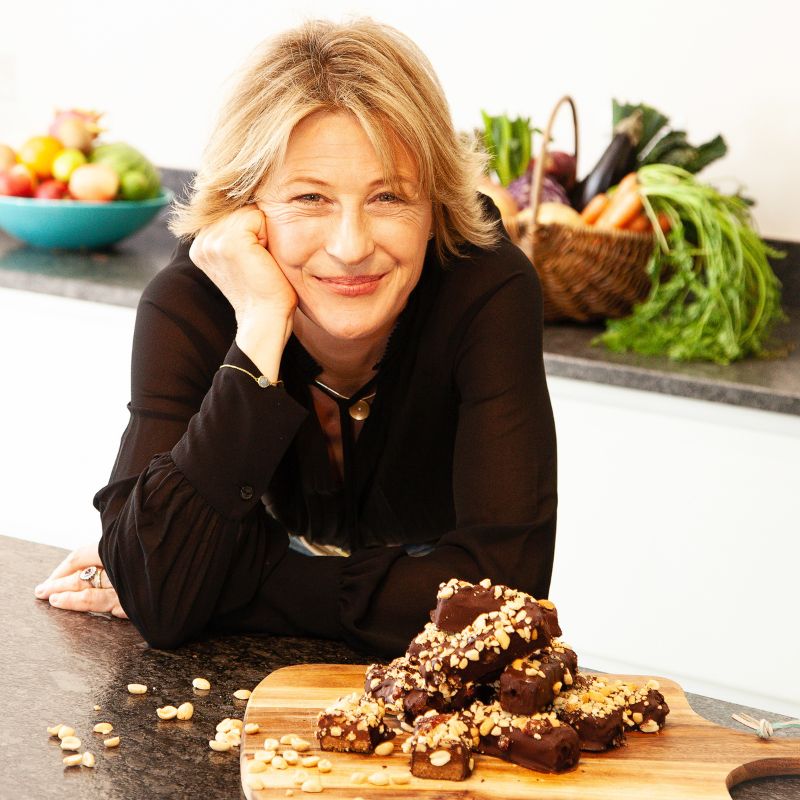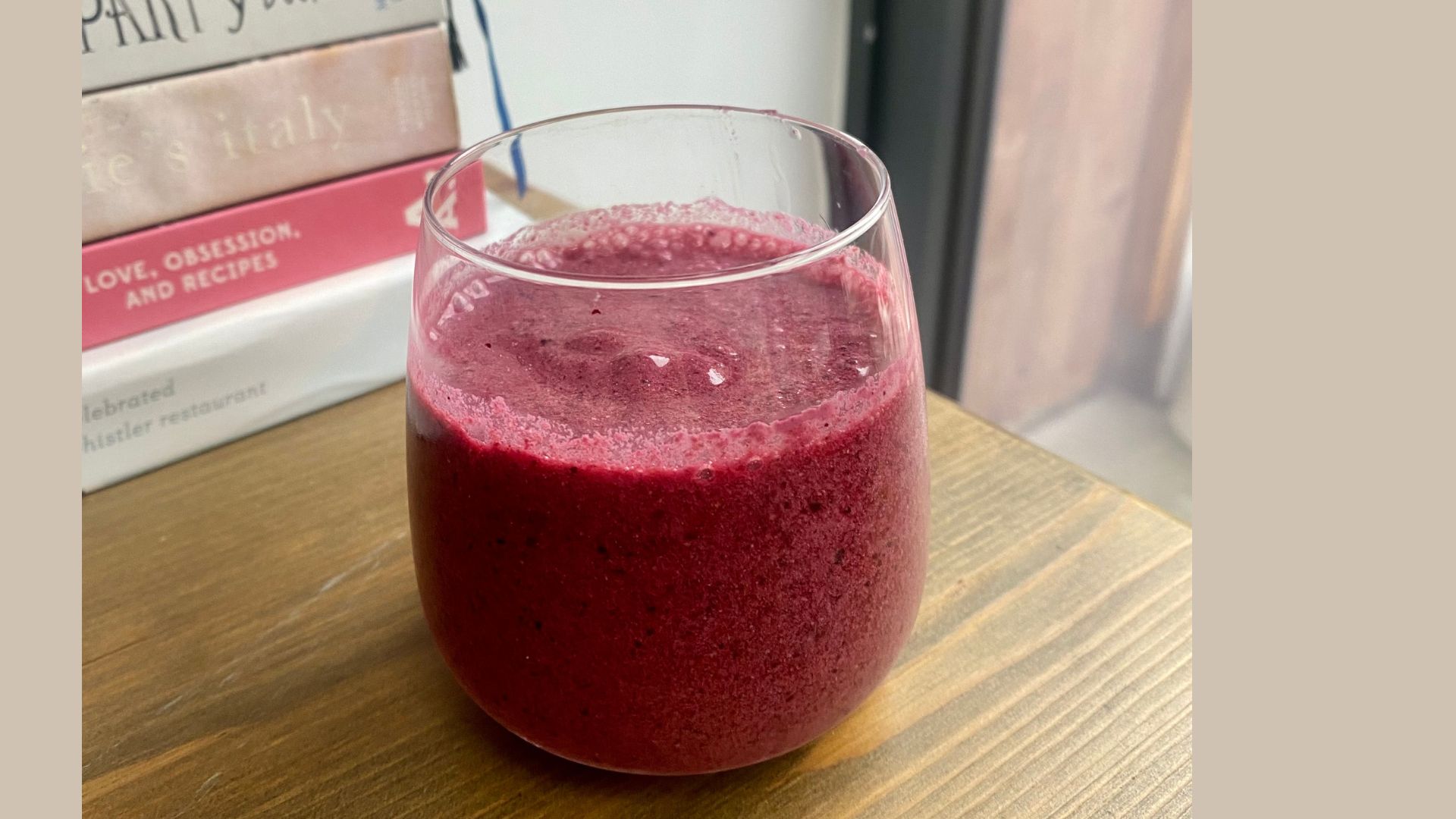I tried a five-day challenge to learn how to get more fibre in my diet - here's what happened
Want to know how to get more fibre in your diet? Writer Jennifer Kyte took on the challenge of upping her fibre intake for five days to find easy and sustainable solutions


Let's face it, deciding you need to find out how to get more fibre in your diet isn't exactly exciting. It's not something I'd thought about until recently but when I read that only 4% of women in the UK are getting enough, I started to wonder if it was time I took the nutrient more seriously.
Fibre is found among gut-heathy foods like whole grains, seeds, nuts, lentils, fruits and vegetables and is one of the most important macronutrients in our diets. It mainly helps the digestive system function properly, feeding the so-called 'good bacteria' in our gut, which can help improve our blood sugar controls (and in turn, help reduce the risk of conditions like diabetes, heart disease, and cancer), our heart health, and naturally, our digestive functions. In the short term, this means we stay fuller for longer, have fewer food cravings, and have higher energy levels.
However, as noted, very few of us are actually getting the 30g of fibre we need every day to reap these benefits and improve our gut health. I was shocked to discover this, especially given all the attention on gut health and prebiotics at the moment, so I started looking into how to get more fibre in your diet. A quick Google search came up with lots of suggestions of the best and worst foods for gut health, but I wanted something a little more structured. I came across a 5-day fibre challenge and decided to give it a go.
How to get more fibre in your diet
1. Bulk up your meals with fibre-rich ingredients
Like a lot of us, I have a lot of random ingredients in my cupboards that rarely get used. Foods like chia seeds, flaxseeds, tins of beans and peas that I'll use only when I'm out of fresh ingredients. I was pleasantly surprised to learn that many of these cupboard staples are really good for bulking meals up with fibre.
Normally, I don't eat breakfast and opt for a black coffee to see me through the morning. To get my daily intake of fibre up, I decided to make a change and start tucking into simple breakfast and healthy brunch options like smoothies and porridge. I found that adding a couple of spoonfuls of chia seeds to a fruit smoothie, which is already high in fibre, and a few raspberries to my porridge dramatically helped to increase my intake. Many people pick up a blended supplement like greens powders for the same reason.
Dominique Ludwig, a registered nutritional therapist whose plan I followed for the five-day period, says this is one of the best ways to get more fibre in your diet. “Chia seeds are a champion ingredient,” she says. "Per 100g of chia seeds have 34g of fibre. Adding 30g to a smoothie will give you a gut-boosting fibre-rich breakfast."
I did struggle to eat so early in the morning as I'm so used to waiting until midday, but breakfasts like these are easy to get down and I did feel full until later in the afternoon. This stopped me from indulging in my snack habit a few hours later, so it's something I'm keen to keep doing.
Sign up to our free daily email for the latest royal and entertainment news, interesting opinion, expert advice on styling and beauty trends, and no-nonsense guides to the health and wellness questions you want answered.

Dominique is an accomplished nutritionist and nutritional therapist who is also BANT, CNHC and AFMCP accredited. Dominique works with numerous health conditions using a personalised nutrition approach. She specialises in her signature Renew Reset Recharge® programme; female and digestive health, weight management and DNA nutrigenetics.
2. Change your shopping list
As well as eating porridge, which contains high-fibre oats, I tried adding new options to my shopping list at the start of the week to diversify the foods I was eating. Dry cereals like bran flakes I found to be a good alternative option, although be sure to check the ingredients on the box for added sugar. To this, I added some raspberries and found another great way to nail my fibre intake for the morning.
As someone who normally grabs leftovers from dinner for lunch, I used the 5-day challenge to try some new quick lunch options. Per Ludwig's advice, I made dishes like green soup and casserole, fibre-rich salads, and even sandwiches.
My favourite was the green soup - made of fibrous green vegetables, onions, and garlic - it was just what I needed on a cold day and of the five days on the challenge, I ended up eating this three days in a row. If you want to know how to boost your gut health in winter, I'd recommend this. It was easy and quick to make too - just combine onions, garlic, broccoli, peas and spinach, and throw it into a blender along with some sunflower seeds. Just one portion of this soup provides half the recommended daily amount of fibre, so it’s a real winner.
"You can boost any soups and casseroles you make even more by adding a tin of beans to thicken the mixture instead of potatoes," Ludwig says. "One 400g tin containing 280g of beans can add an extra 20g of fibre to your recipe. Adding sunflower or pumpkin seeds can make a difference too."

Jennifer Kyte found a berry smoothie with chia seeds to be an easy and delicious way to get more fibre in your diet.
3. Batch cook your favourite fibre-rich meals
During the week, I tend to eat with my son around 6 pm as previous diets have taught me that time works best for my digestion. But it doesn't leave much time for cooking after a full day's work, so cooking in bulk at the weekend has always been the way forward in my eyes.
I used the five-day challenge to see what I could add to my favourite weekday meals to boost my fibre intake and came across a new recipe for chilli, created by Ludwig, which incorporates red lentils and peas. "These add an extra 5g of fibre per 100g," explains the nutritionist. "Lentils are also fantastic as they're a soluble fibre and easy to add to dishes."
Another classic in my house, and one I could eat forever, is spaghetti bolognese. But, unfortunately, piles of pasta on their own are sadly not a winner when it comes to our gut health and good fibre intake. Instead of white flour pasta, I bought yellow pea pasta online. To my surprise, it wasn't crazy expensive and made for a brilliant alternative. Together with the red lentil bolognese, I was blown away by how delicious it was. Plus, I felt full all evening.
“There are plenty of health reasons associated with upgrading your traditional pasta for red lentil, yellow pea or green pea pasta," Ludwig says, aside from their added fibre content. "These kinds of pasta also pack a punch when it comes to protein. Thanks to the extra protein and fibre, we are likely to feel full up faster and stay fuller for longer [as these take longer to digest compared to other macronutrients]."
4. Swap out your sweet treats
Like most people, I try to avoid sugary snacks and sweets but it's almost impossible to avoid them when you have a child in the house. I also have a sweet tooth, so given that sugar actively harms our digestive system, I thought it was going to be a no-go when taking on the challenge.
Much to my surprise though, I didn't have to. There are sweet foods out there that are high in fibre and chocolate is one of them. "Some surprising high-fibre foods include 70% dark chocolate and raspberries if you want a sweet treat," says Ludwig.
Even just swapping some of the chocolate you eat for dark chocolate comes with health benefits, she notes, as it increases your fibre intake by 7g per 100g.
"Popcorn is also a great source of fibre for a little treat," she adds, as the popular movie snack contains 5g of fibre per 30g of popcorn.
Results of the five-day fibre challenge
After the five-day challenge, I honestly felt so much better. Most noticeably - look away now if you're squeamish - in my bowel movements. One of the biggest changes was how often I was going to the toilet. Before it was once a day, if that, but it was twice a day during the challenge with a quick and easy movement every time. Afterwards, I felt so light and the bloating was gone.
I'm a carbohydrate lover - pasta, bread, you name it - so I was excited to go back to eating these staples post-challenge. The day after I finished the challenge, I started eating 'normally' again to see if I felt any different. That night, I had horrible IBS symptoms, I felt tired a lot earlier, and my energy levels were really low.
So now, I’m much more aware of adding fibre to all my meals and I feel so much better for it. I’m sleeping well, feel more energised in the day and the meals are filling me up, so I’ve stopped sneakily snacking on my son’s sweets when I’m working.
What food is highest in fibre?
So, what should you add to your shopping list to follow a high-fibre diet? Seeds, beans, oats, green veggies, fruit and so much more, says Ludwig. "Try to eat at least five different vegetables each day with two to three fruits. This alone can give us around 10g of fibre a day,” she explains.
Other foods that contain high levels of fibre and make it easy to learn how to get more fibre in your diet include:
- Avocado
- Brussel sprouts
- Kale
- Peas
- Chia seeds
- Flaxseeds
- Pumpkin seeds
- Sunflower seeds
- Green or red lentils
- Tinned beans
- Tinned chickpeas
- Quinoa
- Dried fruit
- Rye bread
- Porridge oats
- Popcorn
- Nut butters
For an easy win on the road to learning how to get more fibre in your diet and a chance to try something (probably) new to you, Ludwig recommended Psyllium Husk. "This is the husk of tiny psyllium seeds. It's rich in soluble and insoluble fibre and contains 8.5g of fibre per 10g of husk, which is over a quarter of our recommended amount. You can add it to your morning smoothie or evening meal to boost that fibre."
What are the symptoms of low fibre?
- Constipation: “We may experience problems with constipation or a sluggish bowel if we don’t have enough fibre,” Ludwig explains. “Since the bowel is a detoxification organ, it is not healthy for us for our waste matter to get held up in transit. Human beings are designed to poo regularly.”
- Feeling hungry after a meal: “Fibre fills us up because it is bulky in our digestive tract,” she adds. “Plus fibre expands when it absorbs water in the body, which also contributes to that feeling of fullness. If you’re reaching for snacks throughout the day chances are you need more fibre.”
- Tiredness: "If we don’t eat enough fibre chances are our blood sugar isn’t balanced and this can make the body feel really tired. Fibre activates the pancreas to release more insulin supporting better sugar control so adding more fibre will add to your energy levels."
- Unwanted weight gain: "Not getting enough fibre can impact our weight in many ways. Fibre activates an enzyme in the body called Glucopeptide-1 which has some surprising effects. When we eat a diet rich in soluble fibre the GLP-1 levels in the blood rise. This slows down gastric emptying, which can make us feel satiated. It also activates the pancreas to release more insulin and activates our brown fat - this is our active fat cells that can burn fat and generate heat."

Jennifer Kyte is an experienced editor and writer specialising in women's lifestyle and celebrity interviews. She has worked for national publications both in the UK and Australia for the last 15 years covering everything and anything from royal, celebrity, health, and real life to major news events.